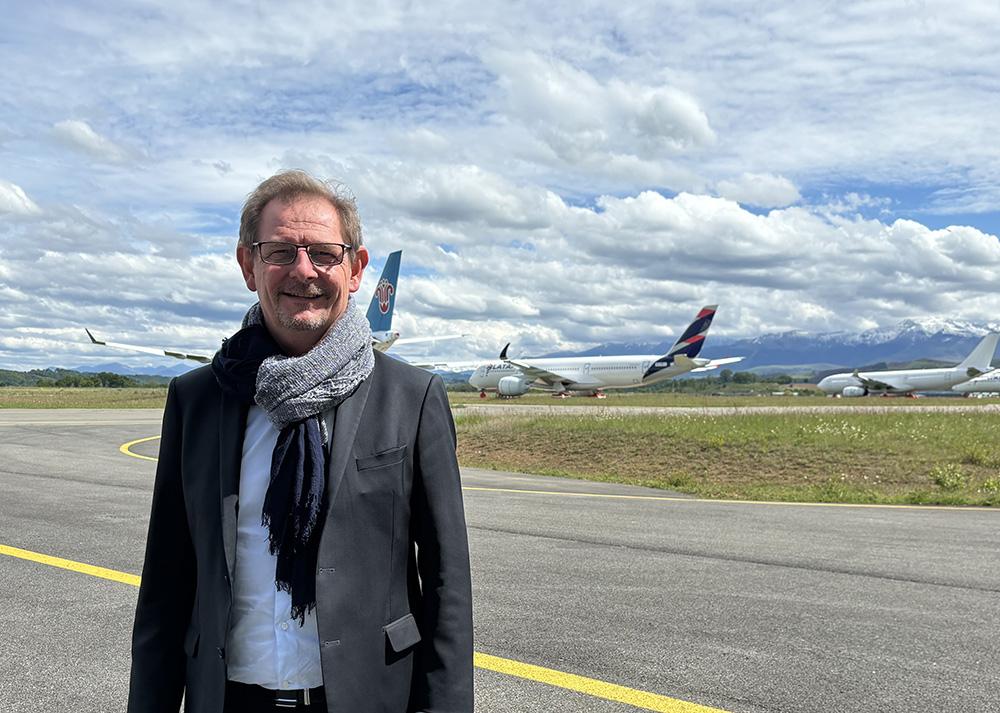
Tarmac Aerosave Chief Commercial and Development Officer Christian Ceruti
Christian Ceruti was appointed as Tarmac Aerosave’s chief commercial and development officer May 2. He spoke with Aviation Week about the company’s recent capability and facility additions, including its new joint venture with Airbus in Chengdu, China.
Tarmac Aerosave just recently opened its Airbus Lifecycle Services Center (ALS) joint venture in Chengdu, China at the beginning of the year. What type of demand has it seen and what projects have been undertaken so far?
ALS is a joint venture between Airbus, Tarmac Aerosave and the City of Chengdu. It’s been mostly created to address the Chinese market. They opened in January 2024 and have received their first aircraft for storage and maintenance.
ALS is another player in the recycling, storage and transition market, moreover, with the Tarmac DNA. The global market is growing and especially in Asia. There is room for this new player. They will first address the Airbus A320 and A330 families. Satair is located on the same site and will sell the parts coming from dismantling.
We’ve seen fewer part-outs and teardowns than originally expected as airlines are now opting to fly older fleets for longer, and Airbus reported that it expects 75% of the aircraft that pass through ALS to fly again after storage, upgrade or conversion. How do you expect this to impact Tarmac Aerosave’s overall business focus?
It’s true that the part-out market has never been so low and 2024 will certainly be lower than 2023. On Tarmac Aerosave’s side, the number of aircraft parted out remains stable since 2019. A significant number of aircraft that were dedicated to part-out have finally been returned to service.
The lack of aircraft on the market is very critical. As an example, we have redelivered more aircraft than ever—264 in the past 24 months.
Most of our activity is focused on aircraft storage and aircraft transition. Aircraft storage always means that the aircraft needs to be maintained in flight condition and will return to the sky one day. Our redelivery rate has been 70-80% over the past years.
Tarmac Aerosave has credited you with helping to develop and diversify its services portfolio since you joined the company in 2014. Could you tell me a bit about how this portfolio has changed and why?
Well, at that time Tarmac Aerosave was mainly known as an aircraft recycling center and had no visibility on the market, while the two other activities—maintenance and storage—were already operational and successful. My job with the team consisted of rationalizing the three services and adding aircraft transition. We are now able to propose to our leasing companies, brokers and airlines the full transition of an aircraft—i.e. storage, maintenance, system modification, cabin modification and painting—at two sites. And if the customer decides in the end to part the aircraft out, we can do it also, which is very comfortable for our clients.
The area where we have significantly developed our services is engines. We have built an engine shop with two lines for teardown of all types of [CFM International] CFM56s and six lines of quick turn maintenance for CFM56 and Leap engines. This new service is very appreciated by customers as it prevents the engines from being transported to another engine shop. We have also set up specific support for operators facing issues related to the metal powder issue on their [Pratt & Whitney] PW1100 engines. We can support them with a specific team, tooling and engine stands on short notice and store their aircraft while the engines are being repaired.
Thanks to this diversification, we became a one-stop-shop able to manage the entire lifecycle of an aircraft or an engine. That is more efficient for the customer.
Tarmac Aerosave is working with ATR to identify new recycling processes and increase the number of recyclable aircraft parts. What can share about this partnership, or Tarmac Aerosave’s overall progress in the part recycling space?
Yes, we recycled three ATR [aircraft] last year and four more are planned for 2024. According to our partnership with ATR, more than 12 aircraft will be recycled over the coming years. All parts that can be reused on the second-hand market are inspected, repaired and certified under European Union Aviation Safety Agency airworthiness standards, by authorized repair stations, before being integrated into the ATR spare parts inventory. Fuselage leftovers and unserviceable parts are torn down for the recycling of their raw materials. We recycled 85.5% of the weight of these three aircraft, which is a very good performance.
This demonstrates our ongoing collaboration with manufacturers to be responsible throughout the life of the aircraft. We work with them to improve the recovery rate and reuse of aircraft parts, particularly at a time when the supply chain is under pressure.
Tarmac Aerosave is in the midst of some new facilities construction. What’s on the roadmap for overall facilities growth and global expansion?
Tarmac Aerosave opened an A380 double bay hangar in September 2023 which is already booked for maintenance of A380 and other aircraft types until the end of 2025.
We also launched in July 2023 the construction of another A380-size hangar in “metallo textile” [a type of structure for hangar architecture] which will be completed by the end of June 2024. This new hangar will be dedicated to return to service and light maintenance (e.g. C checks, working parties, landing gear changes, engine change, modifications, etc.) It will help to propose additional maintenance slots to our customers. Tarmac Aerosave is also increasing its office building and logistics hangar in Tarbes, France.





